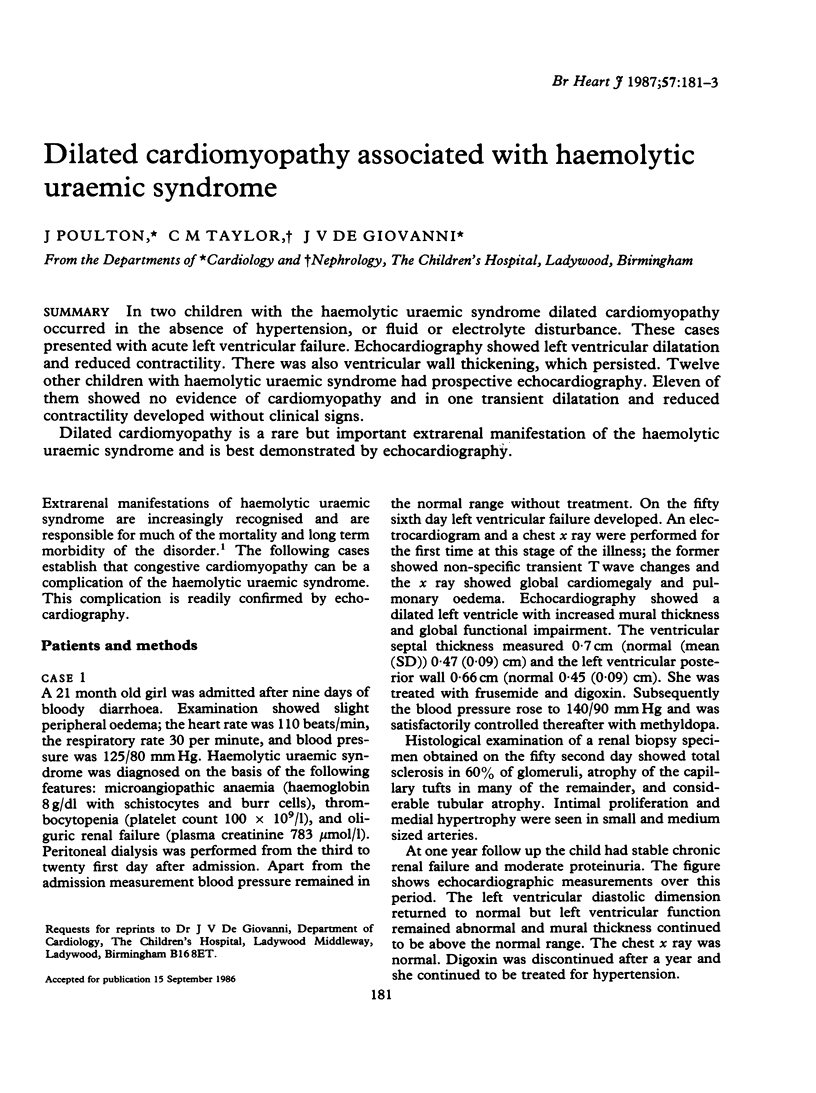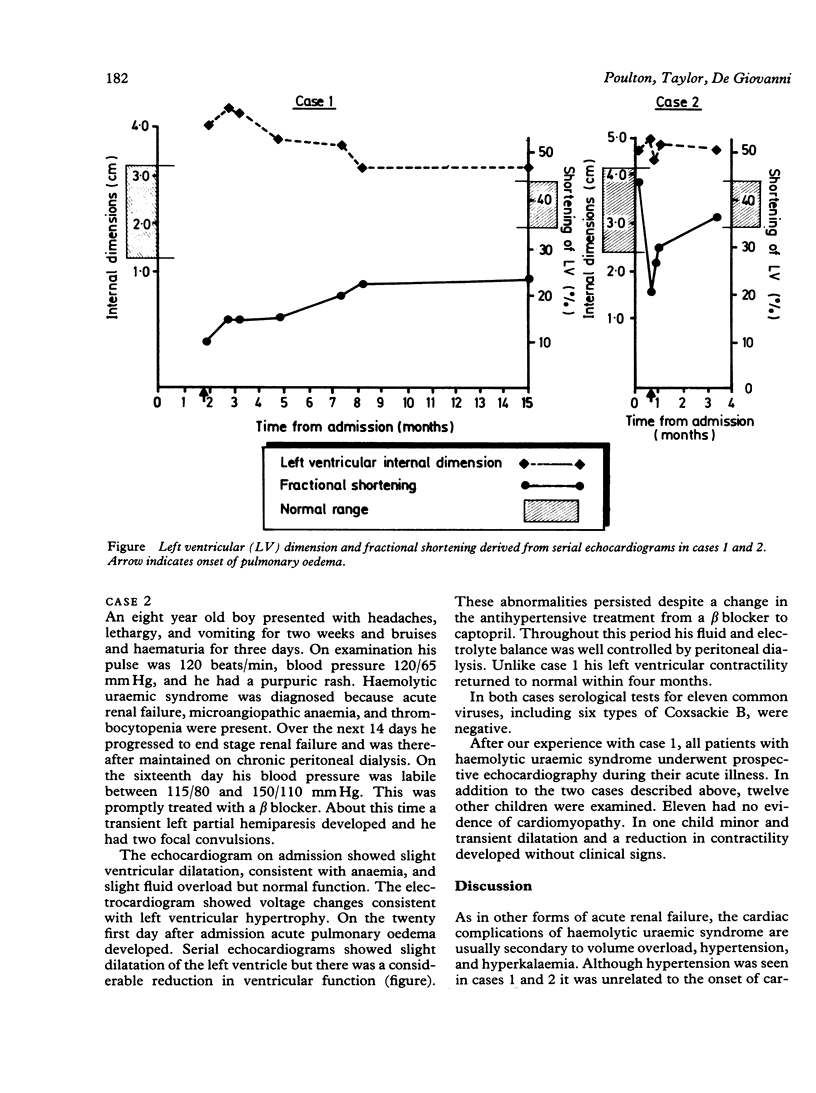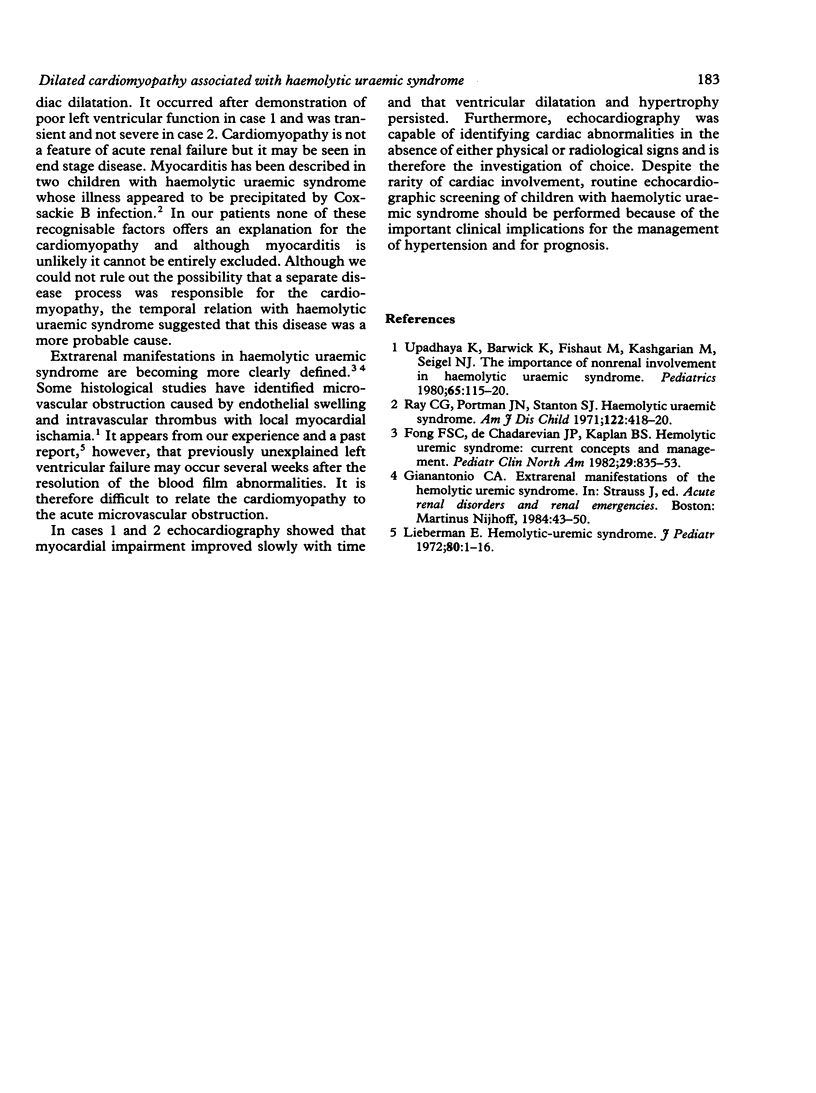Abstract
In two children with the haemolytic uraemic syndrome dilated cardiomyopathy occurred in the absence of hypertension, or fluid or electrolyte disturbance. These cases presented with acute left ventricular failure. Echocardiography showed left ventricular dilatation and reduced contractility. There was also ventricular wall thickening, which persisted. Twelve other children with haemolytic uraemic syndrome had prospective echocardiography. Eleven of them showed no evidence of cardiomyopathy and in one transient dilatation and reduced contractility developed without clinical signs. Dilated cardiomyopathy is a rare but important extrarenal manifestation of the haemolytic uraemic syndrome and is best demonstrated by echocardiography.
Full text
PDF


Selected References
These references are in PubMed. This may not be the complete list of references from this article.
- Fong J. S., de Chadarevian J. P., Kaplan B. S. Hemolytic-uremic syndrome. Current concepts and management. Pediatr Clin North Am. 1982 Aug;29(4):835–856. doi: 10.1016/s0031-3955(16)34216-x. [DOI] [PubMed] [Google Scholar]
- Lieberman E. Hemolytic-uremic syndrome. J Pediatr. 1972 Jan;80(1):1–16. doi: 10.1016/s0022-3476(72)80445-1. [DOI] [PubMed] [Google Scholar]
- Ray C. G., Portman J. N., Stamm S. J., Hickman R. O. Hemolytic-uremic syndrome and myocarditis. Association with coxsackievirus B infection. Am J Dis Child. 1971 Nov;122(5):418–420. doi: 10.1001/archpedi.1971.02110050088010. [DOI] [PubMed] [Google Scholar]
- Upadhyaya K., Barwick K., Fishaut M., Kashgarian M., Siegel N. J. The importance of nonrenal involvement in hemolytic-uremic syndrome. Pediatrics. 1980 Jan;65(1):115–120. [PubMed] [Google Scholar]


